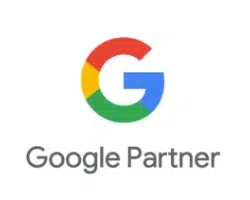If your B2B organization is new to the world of digital marketing, or maybe you have not had satisfactory results in your efforts, and you are now researching ways to acquire traffic or increase visibility to your website- one thing is guaranteed: you will encounter a barrage of SEO tactics, from short-term quick fixes to comprehensive checklists.
Many “specialists” and digital marketing rookies alike, mistakenly view SEO as a mere checklist, especially when compared to the direct costs of PPC (Pay-Per-Click) campaigns.
However, the heart of SEO isn’t about these individual tactics, but the principles that guide them. SEO (like investing) is a realm of compounding effects and requires a keen understanding of delayed gratification, and what that truly means. It’s not merely about checking off tasks or seeking immediate results; it’s about recognizing that each keyword, each strategy, represents an in-depth project requiring dedication, vision, and extensive manpower that is on-going and infinite.
The true essence of SEO is deeply rooted in its foundational principles—principles that are timeless, resilient, and centered around building a lasting brand presence and capturing a meaningful share in the SERPs. It’s a long-term commitment, characterized by nurturing strategies with quality and integrity over time, rather than chasing the next fleeting tactic.
So, as you navigate the digital landscape, it’s essential to grasp that true SEO mastery isn’t in the tactics but in understanding and embodying the principles behind them. In our rapidly evolving digital age, it’s these principles, coupled with patience and a forward-looking vision, that will lead to sustainable SEO success.
Always keep in mind, that SEO is about principles, not mere tactics.
B2B SEO Principles- Extend Beyond the Search Engine
While many believe that SEO is all about maximizing visibility on search engines, today’s reality is quite different. Users are now accessing information from numerous sources. From AI-enhanced search mechanisms to paid search placements, the traditional organic spots in search results are dwindling.
Platforms like YouTube and Reddit have become essential for extending organic reach beyond just Google. Thus, the challenge is not just about optimizing search engines, but ensuring visibility across multiple platforms.
But to truly succeed, it’s crucial to go beyond algorithms (hint: you CAN’T control the algorithm). Success lies in understanding consumer behavior, effective planning, consistent execution, and building a brand that stands the test of time.
Let’s look closer at five principles that not only supplement but also elevate your SEO game.
Embracing the 3Cs in Practice
When evaluating the 3Cs, it’s essential to view them not just as theoretical concepts but as practical tools that can enhance your SEO strategy:
- Company: analyze your unique selling points and how they differentiate you in the digital landscape.
- Customer: get a grip on their online behaviors, search patterns, and pain points. This will enable content that truly resonates and addresses their specific queries.
- Category: it’s about understanding the broader industry trends, competitor strategies, and emerging niches. With these insights, you can tailor your content in a way that positions your brand as a thought leader and a trusted resource in your industry.
By truly embracing the 3Cs, SEO becomes more than just keyword optimization—it becomes a powerful tool for brand positioning and audience engagement.
Precision in Segmentation: The True Key to Relevance
One of the pitfalls many companies fall into is trying to be everything to everyone. In the vast digital ocean, a “one-size-fits-all” approach often leads to diluted messages and missed opportunities. By segmenting the market, you pinpoint the exact niches or demographics that align best with your offerings.
This specificity allows for a deeper, more personal connection. Crafting SEO optimized content that speaks directly to a particular segment’s pain points, desires, or questions makes your brand’s online presence more compelling and relatable. Remember, in the world of digital marketing, specificity can be a game-changer.
Instead of casting a wide net and hoping something sticks, segmentation empowers you to fish with precision, targeting exactly where your prospects are swimming. This kind of focus not only enhances content relevance but also drives better return on investment by channeling resources where they matter most.
Beyond Logos and Taglines: The Deep Roots of B2B Branding in SEO
Branding in the B2B space might not immediately invoke the same vivid imagery as consumer-facing campaigns, but it holds immense power in distinguishing your organization in a competitive marketplace. Think of Salesforce’s promise of customer success, IBM’s “Let’s put smart to work” slogan, or HubSpot’s commitment to inbound marketing. These aren’t merely corporate taglines; they capture the essence of what these brands promise to their business clients.
For B2B SEO, going deep into your brand’s core values and unique selling propositions while reflecting them in every piece of content is crucial. It’s about weaving your brand’s mission, vision, and solutions into every article, case study, or webinar. When a company representative encounters your content, they should instantly recognize the values and expertise your brand brings to the table.
In the B2B sector, purchase decisions can involve substantial sums of money and often require buy-in from multiple stakeholders. A consistent and unique brand message helps build trust and establishes your company as an authority in its domain. Thus, in the realm of B2B SEO, a well-articulated brand story isn’t just about driving organic traffic; it’s about fostering meaningful business relationships and partnerships for the long haul.
Harnessing the Power of Precision in Organic Media Planning
In the B2B landscape, where the buying cycle can be intricate and extended, timing and placement of content become paramount. Imagine releasing a thorough analysis of manufacturing automation just when industry leaders are deliberating over modernizing their production lines. Or perhaps offering a solution piece on enterprise cybersecurity precisely when major corporations are grappling with a fresh wave of cyber threats.
The essence of organic media planning in the B2B realm is to anticipate, align, and adapt. It’s about forecasting industry trends, understanding the cyclical nature of certain business challenges, and tailoring content release schedules to coincide with these pivotal moments. Proper media planning also involves optimizing for platforms and channels most frequented by your target audience. Perhaps it’s a series of LinkedIn articles for C-suite executives, detailed whitepapers for technical leads, or webinars aimed at decision-makers in a particular sector.
Organic media planning is essentially laying down a breadcrumb trail for potential clients and partners, leading them straight to your offerings. It’s about ensuring that your valuable insights and solutions don’t just exist, but thrive and resonate in the exact spaces where industry discussions and decisions are being made.
Embracing a Full-funnel Perspective
In the realm of B2B marketing, a narrow focus on traffic and rankings can lead to missed opportunities. It’s crucial to adopt a more holistic view that encompasses the entire customer journey. This means analyzing and understanding the various touchpoints, interactions, and decisions that a potential business client goes through from their initial discovery of your brand to the final conversion.
Start by mapping out the stages of your B2B customer’s journey. Recognize the questions they might have during the awareness phase: What solutions exist for their challenges? As they progress to the consideration phase, they’ll dive deeper, comparing offerings and analyzing benefits: How does your solution compare to competitors? What differentiates you?
By the time they reach the decision-making phase, your content should be geared towards eliminating any last-minute reservations or doubts. Here, detailed case studies, testimonials, and whitepapers can showcase your proven track record and expertise.
Furthermore, it’s not just about the content type; it’s about delivering this content at the right moment. Utilizing tools like marketing automation and predictive analytics can help ensure that your tailored content reaches prospects at the most opportune times, nudging them closer to conversion.
Ultimately, by adopting a full-funnel perspective, you’re not just playing the short game of traffic spikes and ranking boosts. You’re strategically nurturing relationships, building trust, and guiding potential B2B partners towards realizing the true value of your offerings.
And a final but important point:
do NOT write content on the blog section of your website for the sake of writing content- be INTENTIONAL and STRATEGIC with your resources. (unless of course, impact and tangible results don’t matter to you- then keep writing about how great your CEO is, or how you have remodeled your facility, or how “so and so” is now on the marketing team)
In today’s fast-paced digital landscape, it’s tempting to chase after the latest SEO tactics and quick fixes. However, as we’ve explored throughout this article, true SEO success in the B2B sphere lies in embracing overarching principles rather than fleeting tactics. By deeply understanding the 3Cs, segmenting the market for precision, crafting a distinct brand image, planning organic media with intent, and taking a full-funnel view, businesses can navigate the complex terrain of SEO with clarity and purpose. These principles serve as the foundation, ensuring that your efforts are not just about gaining visibility but about forging meaningful connections with potential business partners.
Remember, in the world of B2B marketing, it’s the relationships and trust built over time that determine long-term success. By focusing on the bigger picture and grounding your strategies in well-established principles, you’re not only setting up for increased organic traffic and better rankings but, more importantly, cultivating relationships that can lead to meaningful and lasting business collaborations. SEO, when approached with this mindset, becomes a powerful tool for growth, brand enhancement, and strategic positioning in the market.










